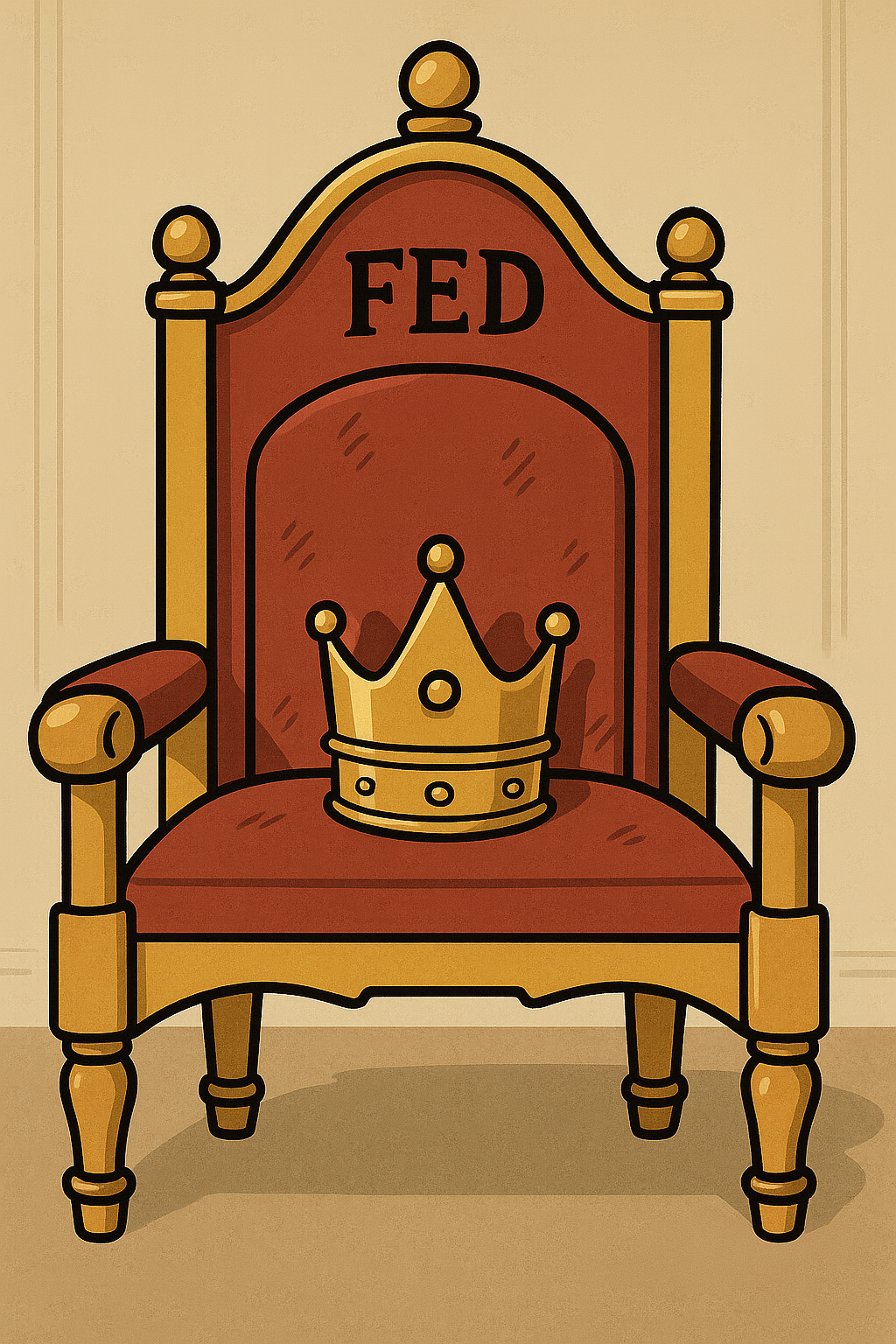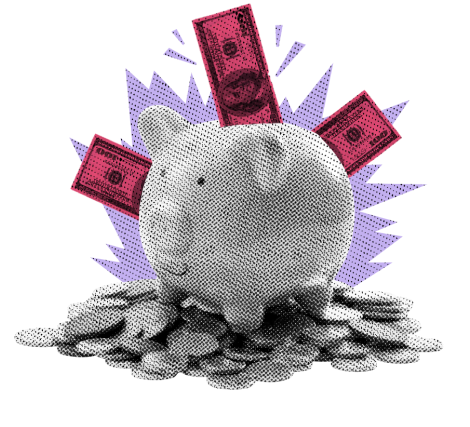NEXT UP
-
The Fed is being overly cautious based on forecasted inflation rather than current data
-
Powell is not the rate czar the media makes him out to be
-
Trump’s public vs private motivations for rate cuts are aligned
-
Tariffs are the real inflation driver, not demand overheating
-
Political threats to Fed independence could backfire via higher Treasury yields
-
You can quote me: “Firing Powell won’t change policy—but it might change how fast foreign investors dump Treasuries.”
Fed up. Yeah, those guys again. We simply cannot avoid talking about the grey bankers with whom the market has a toxic love affair. More is good, too much is bad, good is bad, bad is good. Why is the market so obsessed with lower Fed Funds rates? The economy is doing fine at the moment. Companies are surviving, in fact, thriving. Stocks are quite literally bumping up against all-time highs. Geopolitical risks seem to be abating. The President has shown us in so many ways that he does care about the markets. In other words, he will factor in market response when deciding on final trade deals and tariffs. Market-engine AI is not even close to being done. Well, I suppose, having lower rates would be like a cherry on top of an ice cream sundae. Rate cuts are the last missing piece of the puzzle.
But, alas, the Fed is in no rush to lower rates, and that continues to vex traders, and, in case you haven’t noticed, President Trump. Trump can list many public agendas that indeed would benefit the country. The most obvious one is that lower rates would decrease the nation’s borrowing costs–lower the deficit, which we would all like to see. I can’t comment on his private agenda, but I would like to believe he wants lower rates to prop up markets and create wealth for shareholders. He, or his family, own a vast real estate empire. Real estate investment is HIGHLY sensitive to short-term interest rates. In case you missed the memo, lower short-term interest rates are good for real estate, a sector which has noticeably underperformed the markets since… well, interest rates went up in 2022.
For most of us, yeah, lower Fed Funds rates would be a good thing. So, what in the world is the Fed waiting for? The inflation swell is subsiding, and unemployment, while low-ish, is showing small signs that it may be on the rise. Seems like lowering rates is a simple fix for that. Earlier this week, Fed Chairman Jerome Powell said, in plain English, that if not for the threat of inflation caused by tariffs, the Fed would likely have continued to cut rates.
Ok, let’s take a step back and ask the question again. The Chairman has said countless times that the Fed is data-dependent. That means the Fed is reactive with its rate policy. If the Fed is easing and inflation has not shown up yet, why then is it reacting by keeping rates steady, essentially keeping its foot pressed on the brakes? Oh, I see, the Fed doesn’t want to get left flat-footed, like it did when it missed its cue back in 2021. So really, Fed policy right now is based on what might be. Tariffs might cause inflation, so the Fed is not cutting rates. Well, here is a silly question, if the Fed is so convinced that inflation from tariffs is coming, why doesn’t it RAISE interest rates to get ahead of the inflation wave?
Look, it’s not an easy job to appease everyone. One guy who does not feel appeased is the President–you know, the guy in the biggest corner office in the world. He is clearly unhappy with the Fed, mostly the guy who sits in that corner office, Jay Powell. The Pres is constantly berating the Chairman with all sorts of insults hoping to get him to lower interest rates. The latest, although it is not new news, is that the President is considering naming Powell’s successor early in hopes that it would weaken his power. Kind of like how a lame-duck President’s power is diminished between elections and inauguration. Would this cause the Chairman to capitulate and lower interest rates?
Wait! Perhaps we are asking the wrong question. Does the Fed Chairman control interest rates? If Powell were suddenly visited by Dickens-like specters 👻 who helped him see the light and caused a shift in his stance, could he even pull it off? OF COURSE NOT! The FOMC, or the Federal Open Market Committee votes on rate policy. Committee, as in… um, committee. Now, that is not to say that Powell does not have a lot of influence over that committee, but his role as Chairman is less about influencing them to act on his beliefs, and more about generating consensus amongst members. In my Next Up section, 👇 I always highlight Fed speakers. I do it for a reason. I share it with you because it is those speakers who will be voting on whether or not to cut rates, or, dare I even say, raise rates. So, listening to their speeches, which often include Q&As and open discussion, is a good thing. Don’t worry if you don’t have time for that nonsense, because I do it for you. 😉
I can tell you that some FOMC voters would like to see rates come down faster than others, and currently, the overall vibe seems to be a wait-and-see one. You may notice that FOMC votes rarely have dissension–votes are typically unanimous. This may be due to the good work of the Chairman in his consensus building. So if Powell just went on a long vacation, policy votes may not be unanimous, but would most likely lead to the same decision. No rate cuts now, but maybe 2 of them before the year ends.
Even if the President fired Powell today and replaced him with an uber-dove, the move would not likely change policy in the near-term. Threatening to fire Powell or naming his successor, would similarly not be likely to have any impact on the Fed rate policy. It would, however, diminish the faith of foreign investors, possibly causing them to shun dollar-denominated, sovereign debt. That would cause Treasury yields to go higher over time.
Unfortunately, the only thing that the President can do to influence interest rate policy is by using his bully pulpit, which he is doing. And to be clear MOST PRESIDENTS do this, though Trump’s style tends to be a bit more frontal, so it is more obvious. But wait, something is stuck in my mind from Powell’s testimony the other day. He said “if you just look at the basic data and you don't look at the forecast, you would say that we would have continued cutting.” He is referring to the expected inflation from tariffs as being the reason for the pause in cuts. The President is in charge of those tariffs.
Expecting the President to simply abandon all tariffs is not realistic. It is however, realistic for the President to hurry up and get some trade deals inked and keep tariffs at a minimum. This would likely give Fed COMMITTEE members more confidence to continue its easing of rates. For the markets, it would be a win-win. Equities have already factored in some sort of tariffs and even some elevated inflation. Simply knowing where those tariffs end up will give traders a tremendous amount of confidence, which would ultimately be positive for equities.
The Fed Chairman’s term ends next May and presidents typically nominate successors 3-4 months prior. That means the President has a good 6 months to get trade deals done and a tax reconciliation bill on the books before he has to worry about replacing Powell. We know that accomplishing the former will go a long way with the COMMITTEE that makes rate-cut decisions.
YESTERDAY’S MARKETS
Stocks had a mixed close yesterday with the S&P closing as close to flat as you can get. Stocks bounced around throughout the session that was marked with NATO speeches, de-escalation of Israel-Iran tensions, more weak housing numbers, and a weak Treasury auction.
NEXT UP
-
Annualized Quarterly GDP (Q1) is expected to come in at -0.2%, in line with prior estimates.
-
Durable Goods Orders (May) may have grown by 8.5% after falling by -6.3% in the prior period.
-
Initial Jobless Claims (June 21st) is expected to come in at 243k, slightly below last week’s report.
-
Pending Home Sales (May) probably increased by 0.1% after sliding by -6.3% in April.
-
Fed speakers today: Goolsbee, Barkin, Daly, Hammock, Barr, and Kashkari.

.png)


